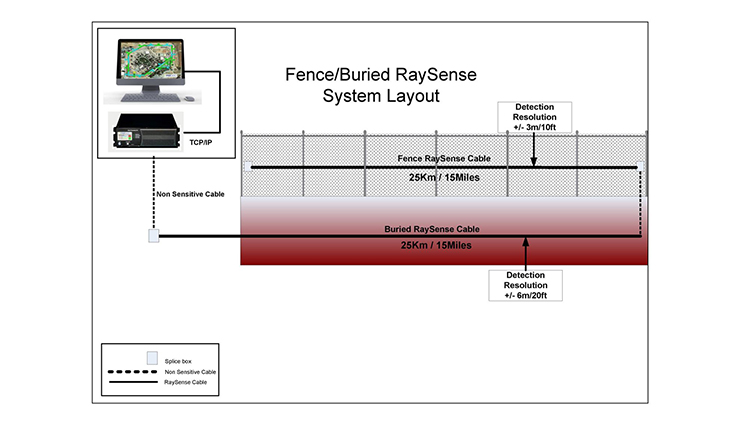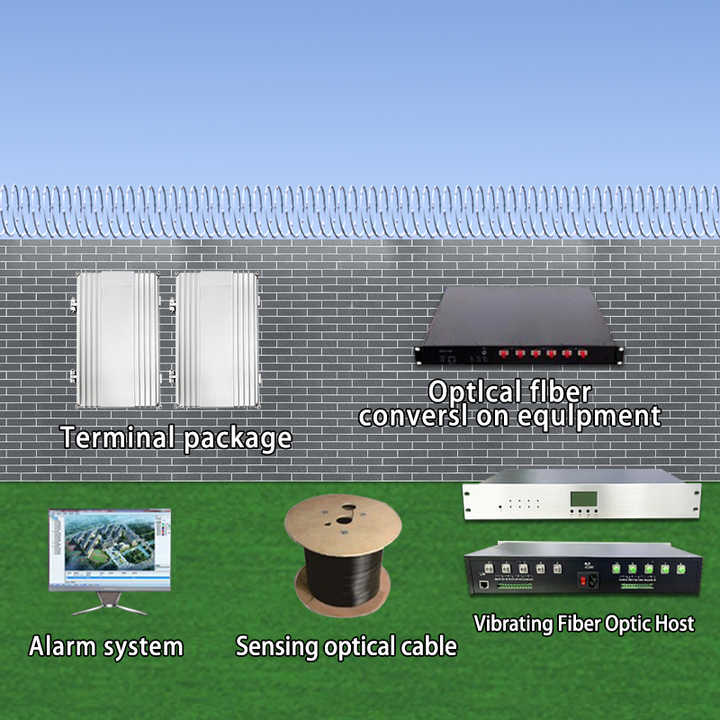Why Fiber Optic Security Systems Are the Future of Security
The shift to fiber optic safety and security systems notes a substantial innovation in the world of defense, driven by their phenomenal information transmission capabilities and durability to outside disturbances. As the landscape of protection advances alongside arising modern technologies such as AI and IoT, the capacity for fiber optics to enhance and redefine safety infrastructures becomes increasingly obvious.
Benefits of Fiber Optic Systems
One of the primary benefits of fiber optic systems is their remarkable bandwidth ability, which promotes the transmission of huge volumes of information over fars away without substantial loss. This characteristic is specifically advantageous for safety and security applications that need the constant tracking and transfer of high-def video feeds, sensing unit information, and various other vital info. Optical fiber can suit the growing needs of contemporary safety systems, ensuring that information remains intact and trustworthy.
Additionally, fiber optic cables are much less prone to electromagnetic disturbance, which can be a substantial issue in environments with various digital devices. This resistance improves the stability of the information being sent, thus reducing the risk of data breaches or system failures. In addition, fiber optic systems are inherently much more secure than standard copper cables, as tapping into a fiber optic line without detection is exceedingly hard.
The sturdiness of fiber optic cable televisions additionally contributes to their charm. They are immune to environmental factors such as moisture and temperature level changes, minimizing maintenance prices and raising system long life. Overall, these advantages placement fiber optic systems as a robust and effective option for modern-day security frameworks, making sure reliable and safe and secure data transmission.
Enhanced Information Transmission Speed

The capability to transfer vast amounts of data promptly facilitates the seamless combination of high-def video feeds and progressed analytics. Protection systems can now refine and analyze information in real-time, improving reaction times and situational awareness. In addition, fiber optic links sustain longer transmission ranges without destruction of signal quality, making them perfect for extensive safety networks.
The boosted speed of fiber optic systems not only improves the efficiency of security operations yet also reduces latency. This is particularly vital in critical scenarios where timely decision-making can prevent protection breaches or mitigate potential dangers. As companies remain to focus on safety and performance, the need for fast and dependable data transmission will unquestionably strengthen fiber optic go to my site systems as a foundation of modern-day safety and security infrastructure.
Resistance to Interference
Fiber optic protection systems continually demonstrate phenomenal resistance to electromagnetic disturbance, a critical benefit in settings helpful hints susceptible to digital sound. Unlike standard copper wires, which can be adversely impacted by magnetic fields, radio frequency disturbance, and other types of electrical disturbance, fiber optic cords utilize light to send data. This integral property makes sure that the signals continue to be clear and unaltered, despite surrounding digital task.
Making use of glass or plastic fibers in fiber optic innovation develops a barrier against interference, permitting trustworthy data transmission even in difficult scenarios such as industrial centers, city areas with high electronic web traffic, or areas near radio towers. This characteristic considerably lowers the possibility of signal destruction or loss, making fiber optic systems specifically suitable for safety applications where stability and precision of information are critical.
Moreover, this resistance to disturbance boosts the total performance and dependability of protection systems, guaranteeing that tracking and sharp systems operate effortlessly. In a world where security is significantly endangered by innovative technologies, the resilience of fiber optic systems stands apart as a crucial function, strengthening their standing as a crucial component of modern-day safety facilities.
Cost-Effectiveness Gradually
Substantial expense savings can be attained gradually with the execution of fiber optic security systems. While the initial investment may seem higher compared to traditional copper-based systems, the lasting financial advantages emerge via minimized functional and upkeep prices (fiber security). Fiber optic wires are inherently much more sturdy and less susceptible to ecological aspects, which equates to lower substitute and repair expenditures over their life-span
Moreover, fiber optic systems call for much less power to run, which further decreases energy costs. Improved information transmission capabilities permit less repeaters and amplifiers, reducing tools investment and improving installation processes. The scalability of these systems also adds to cost-effectiveness, as organizations can increase their security framework without incurring considerable extra costs.
An additional element to consider is the increased efficiency in surveillance and response capacities that optical fiber provide. Enhanced real-time information transmission can cause quicker event feedback times, possibly mitigating losses and liabilities linked with security breaches. Altogether, why not try this out the long-lasting benefits of fiber optic protection systems not just validate the initial expense yet additionally position them as a monetarily sensible selection for organizations seeking durable security remedies.

Future Innovations in Security
Advancing innovations are readied to transform safety and security systems, integrating fabricated intelligence (AI) and machine learning to boost danger detection and feedback abilities. These developments will allow safety and security systems to analyze huge amounts of information in real-time, determining patterns and anomalies that suggest potential risks. This proactive strategy will enable quicker decision-making and much more effective occurrence reactions.
In addition, the incorporation of the Web of Points (IoT) is paving the way for interconnected security tools, using comprehensive monitoring and monitoring. Smart sensing units can communicate information regarding ecological changes, while automated informs can notify security workers quickly of suspicious activities.
In addition, the evolution of biometric technologies will better boost safety devices. Face acknowledgment, finger print scanning, and retina identification are coming to be extra sophisticated, offering layers of verification that are difficult to bypass.
Conclusion
Finally, fiber optic protection systems represent a considerable innovation in security innovation, supplying unparalleled data transmission speed, resistance to electromagnetic interference, and long-term cost-effectiveness. As the demand for sophisticated safety options remains to grow, the combination of optical fiber with emerging innovations such as AI, IoT, and biometrics will even more boost protection facilities (fiber security). The combination of these developments will make certain a much more protected and responsive environment, solidifying fiber optics as a foundation of future safety systems